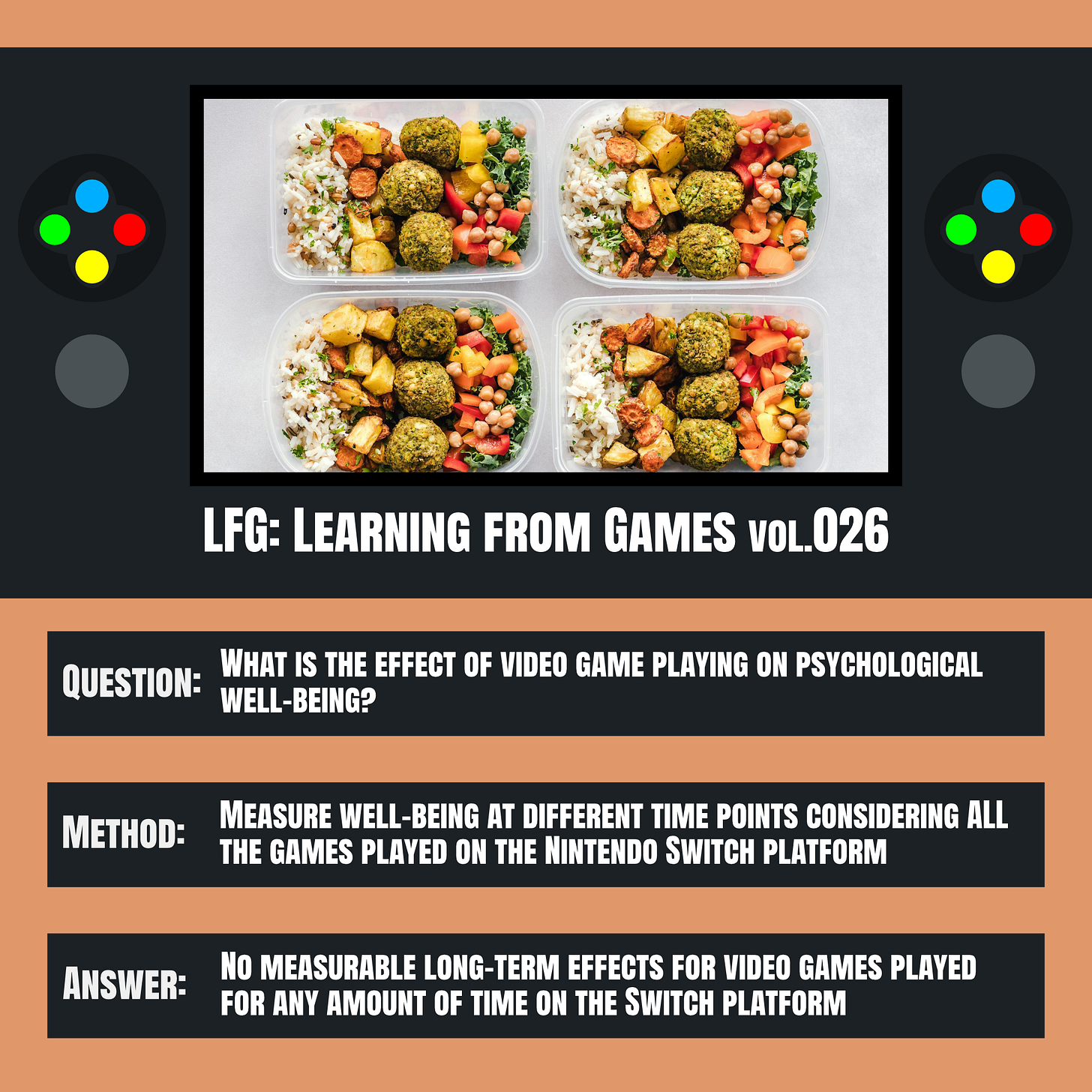Issue #26 of LFG: Learning from Games is about the parallels between deconstructing our food and playing video games and what we can learn from each of those activities. Are you thoroughly confused? Let’s dive in!
Hello JOMT Reader!
Our world is complex. There are many intertwined, interconnected, interdependent, interesting things in our reality. But all of this inter-ness can make it difficult for us to understand how all of the interesting things affect each other. This is especially true when we look at something as broad as video gaming. So, we simplify things by breaking down the complexity into smaller, simpler parts. It’s also known as reductionism.
Reductionism is a powerful tool that can help us understand the inter-ness of our world. For example, think about your favourite food. In order to understand how you got the plate in front of you, you might go one step back and look at how the food was prepared. Was it braised? Slow cooked? Fried?
But knowing how something was prepared won’t tell you the whole story about why it tastes the way it does. To understand that, you’ll need to go back one step further to the ingredients. The raw components of the food and their relative amounts is ultimately what makes your favourite food.
Much of what we know through science was done by deconstructing something about the real world into its ingredients (like genes and subatomic particles). In terms of video games, we’re starting to understand how individual games have an effect on a small aspect of our health.
But just as we saw in the food example above, we still need to know how the ingredients combine together to create the final flavour. Most of us play a variety of games on different platforms for various reasons. These factors influence what we get out of games. Our gaming diet and recipes define how video games affect us.
Since most published research on video games were done at the ingredient level (individual games or very short time frame), researchers in the UK, Netherlands, and Sweden approached it at the food preparation level. That is, instead of looking at a small number of games, they looked at all the games played on the Nintendo Switch platform. What can we learn from our gaming diet on the Switch platform?
Playing video games has no long-term effect on human health
Let’s start with what is likely to be the most polarizing finding. Time spent playing video games on Nintendo Switch had no effect on psychological well-being, regardless of how long they played. No matter how many video games were considered, factors like life satisfaction, emotional states, depressive symptoms, and general mental well-being refused to move from 0.

My key takeaways based on this observation are:
There are no negative consequences of long-term video game playing: In terms of the factors they looked at and in the year long time frame, playing had no measurable effect. It’s significant because the mix of games considered by the researchers (all the games played on Nintendo Switch) more closely matches our gaming diets in real life.
On their own, video games have a neutral effect: Unlike illicit drugs, which are inherently harmful, video games on their own are neutral. If they were inherently good or bad, the graphs above would look very different. The neutrality means that we, as players, decide whether video games are good or bad for us. In fact, those who believed gaming to be beneficial were more likely to report higher levels of well-being than those who believed otherwise.
Playing video games has a short-term effect on human health
Let’s go back to the graph above. On the far left side of each of them, you’ll notice a little hill or valley before it flattens to reveal the flat lands of the prairies. That bump was measured at 1-2 hours after playing video games. Said another way, for 1-2 hours after playing video games, players were more satisfied with life, were in a better state of emotional and general well-being, and experienced less depressive symptoms.
Short-term effects of video games explains all the conflicting findings: Most video game research measures their effects shortly after a video game playing session. It makes sense, given that the biggest bumps appear 1-2 hours after playing. But stretched out over a long enough period of time, the positive and negatives balance out to zero.
Video games provide temporary relief: There doesn’t seem to be any lingering effects of playing video games. It’s a good way to unwind and dissociate from daily stresses.
What’s missing?
Although the researchers considered all of the games an individual plays on the Switch platform, it isn’t the only gaming platform. Most players interact with other platforms and mix them up as part of their gaming diet. So, there’s still more to consider if we want to draw conclusions about how video games affect our health.
The types of games available on each of these platforms may also influence the results. It’s also possible that other factors not considered here, like reaction times or hand-eye coordination, will be impacted with long-term video game playing. I’m eagerly awaiting a follow-up to this study that will address some of these shortcomings.
It’s probably safe to say that we know what most of the ingredients are that feed into the overall recipe of how video games affect human health. Now, we have to start combining those ingredients and looking at how they can be prepared so that we’ll come to a more complete understanding of our gaming diets and its effect on our health.
If you want to read more about this study, you can access the article here for free: https://royalsocietypublishing.org/doi/10.1098/rsos.241174
If you liked what you read, please consider giving this post a like and sharing it with your community!





